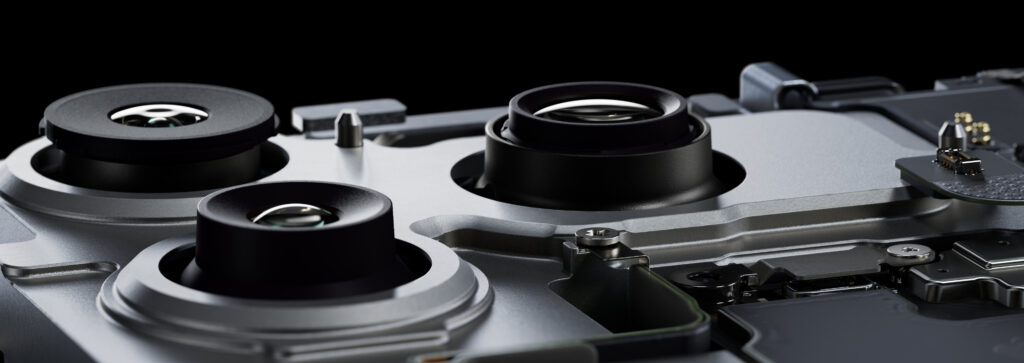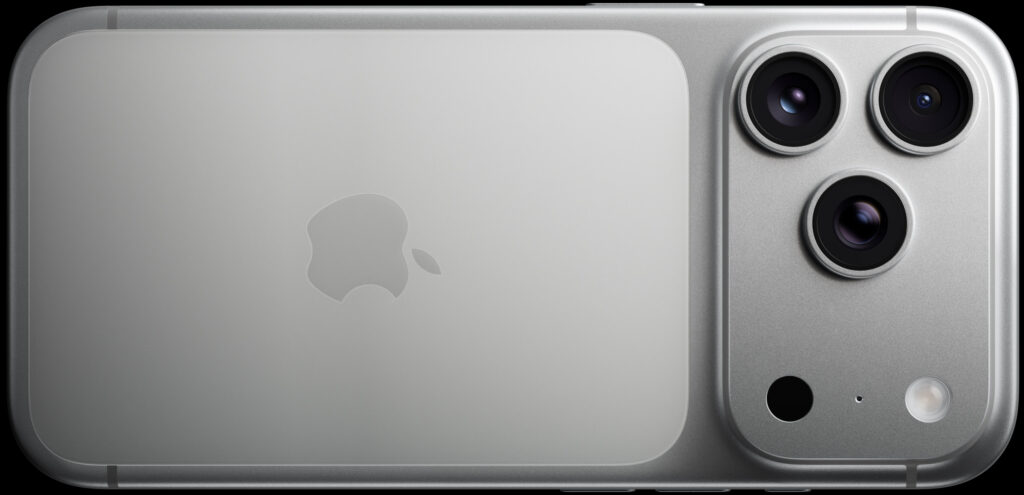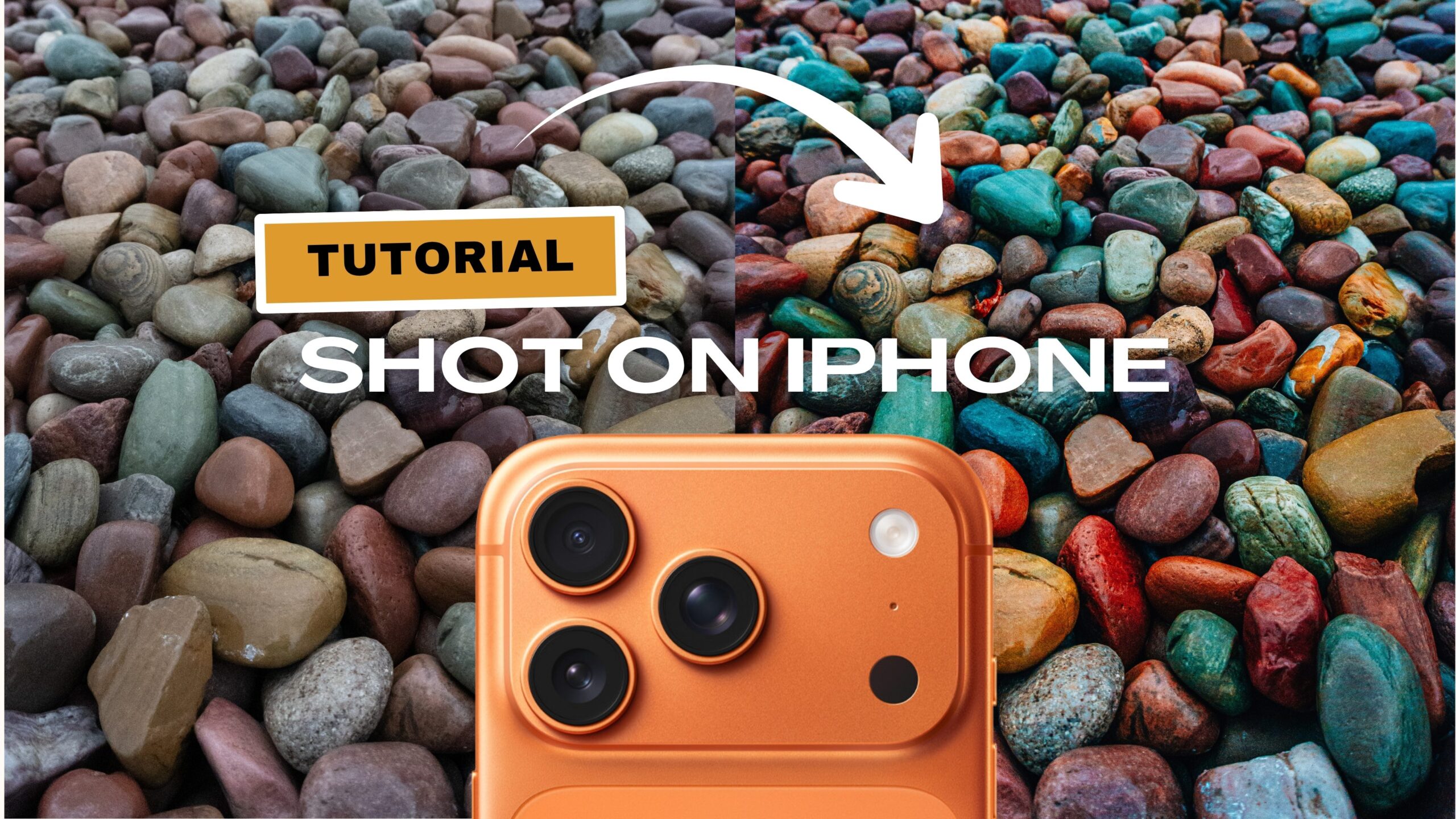After years of incremental camera updates that only mattered to pixel peepers, the iPhone 17 Pro’s camera system represents a fundamental shift in mobile photography. Every lens is now 48MP, zoom extends to 8x optical quality, and ProRes RAW video brings Hollywood color grading to your pocket. But here’s what Apple’s keynote didn’t explain: how these changes actually impact your photos and videos in real-world use.
I’ve spent years telling you that megapixels don’t matter beyond a certain point. That’s still true. But the iPhone 17 Pro’s all-48MP system isn’t about resolution—it’s about consistency, flexibility, and finally delivering professional capabilities that weren’t possible in a phone. Let me break down what’s actually revolutionary here and what’s just marketing noise.

The All-48MP Revolution: Why Consistency Matters More Than Resolution
The iPhone 17 Pro features three 48MP cameras: main (24mm equivalent), ultra-wide (13mm), and telephoto (100mm base with 200mm crop capability). This isn’t Apple chasing specs—it’s solving a problem that’s plagued smartphone photography since multi-lens systems appeared.
Previously, switching between lenses meant jarring quality differences. Your main camera shot gorgeous 48MP images, then you’d switch to ultra-wide and drop to 12MP mush. Telephoto shots had different color science, different noise patterns, different processing. Professional photographers call this “inconsistent rendering,” and it’s why iPhone photos sometimes looked like they came from different cameras—because they did.
Now, every lens captures identical resolution with similar sensor architecture. The benefits cascade through everything:
Consistent color science: All three cameras process colors identically. Shoot a landscape panorama switching between lenses, and the sky remains the same blue throughout. Previously, you’d get color shifts that required post-processing to fix.
Uniform noise patterns: Low-light performance remains consistent across focal lengths. The grain structure in your ultra-wide shadows matches your telephoto shadows. This matters for computational photography—Apple’s processing can now apply uniform noise reduction across all images.
Seamless focal length transitions: When recording video and zooming between lenses, the transition is imperceptible. The 4K footage maintains quality whether you’re at 13mm or 200mm. Previously, you’d see resolution drops and color shifts mid-zoom.
Professional workflow benefits: Editing a wedding shoot or travel series means consistent starting points. You’re not constantly adjusting for different sensor characteristics. Batch processing actually works.
The 48MP resolution enables 2x lossless zoom on all cameras through sensor cropping. This means six native focal lengths without quality loss: 13mm, 26mm (ultra-wide 2x), 24mm, 48mm (main 2x), 100mm, and 200mm (telephoto 2x). That’s unprecedented coverage in a phone.

The Telephoto Revolution: 8x Optical Quality Changes Everything
The new 48MP telephoto camera offers 4x optical zoom (100mm equivalent) with 8x optical-quality zoom (200mm) through sensor cropping, extending to 40x digital. Let me explain why this matters more than any camera upgrade in recent years.
Wildlife and Nature Photography
200mm is the minimum focal length serious wildlife photographers consider useful. It’s the difference between disturbing animals and observing naturally. With the iPhone 17 Pro, you can finally:
- Photograph birds without scaring them away
- Capture zoo animals through enclosure gaps
- Document nature from respectful distances
- Get frame-filling shots of skittish subjects
The 48MP sensor means heavy cropping remains viable. That “40x digital zoom” isn’t just marketing—at 20x, you’re still working with enough data for social media sharing.
Sports and Events
Parents at school sports can finally get real shots of their kids. Concert-goers can capture performers, not just stage dots. Sports photographers can get sideline-quality images from the stands. The image stabilization at 200mm is remarkable—handheld shots that would require tripods with traditional cameras.
Street Photography and Candids
The best street photography happens when subjects don’t know they’re being photographed. 200mm enables genuine candid capture from across streets or public spaces. You’re documenting life, not disrupting it. The compression effect of telephoto creates that beautiful subject separation street photographers love.
Architectural Details
Building facades, architectural ornaments, and urban details previously required physical proximity or real cameras. Now you’re capturing gargoyles from street level, construction details from safe distances, and urban textures without trespassing.
Practical Everyday Uses
Beyond artistic applications, 8x zoom solves mundane problems:
- Reading signs and menus from distances
- Documenting license plates or information
- Inspecting roof damage without ladders
- Checking on boats from shore
- Wildlife watching on hikes
The quality at 8x is genuinely impressive. This isn’t the digital mush of previous attempts—it’s sharp, detailed imagery suitable for large prints.
ProRes RAW Video: Professional Color Grading in Your Pocket
ProRes RAW is the headline professional feature, but Apple’s marketing doesn’t explain why this matters. Let me translate from video professional speak.
Traditional video recording “bakes in” color decisions. When your iPhone decides exposure, white balance, and color grading, that’s largely permanent. You can adjust in post, but you’re pushing already-processed data, leading to banding, artifacts, and quality loss.
ProRes RAW captures the actual sensor data before processing. It’s like shooting photos in RAW but for video. This enables:
Complete exposure recovery: Blown highlights contain recoverable detail. Crushed shadows lift without destroying quality. That sunset shot where you exposed for the sky? The foreground is salvageable.
Professional color grading: Match footage from different cameras seamlessly. Create consistent looks across projects. Apply LUTs (color lookup tables) without degradation. This is how Hollywood creates those distinctive color palettes.
White balance flexibility: Shot under mixed lighting? Fix it perfectly in post. Color temperature becomes a creative decision, not a permanent mistake.
Genuine HDR delivery: The expanded data enables proper HDR video—not the tone-mapped approximation of standard recording but genuine high dynamic range for compatible displays.
The downsides are significant: 6GB per minute at 4K means a 64GB five-minute video. You need professional editing software (Final Cut Pro, DaVinci Resolve). Processing requires powerful computers. This isn’t for family videos—it’s for commercial work, documentaries, and serious filmmaking.
Genlock: Multi-Camera Synchronization That Actually Works
Genlock enables frame-perfect synchronization between multiple cameras—a feature found in $50,000 cinema cameras, now in your phone. This sounds niche, but the applications are broader than you’d think.
Multi-angle interviews: Position three iPhone 17 Pros around a subject. Every frame aligns perfectly in editing. No more nudging clips to sync audio, no drift over long recordings.
Event coverage: Wedding videographers can position iPhones for ceremony coverage. Concert filmmakers get synchronized crowd and stage angles. Sports parents can combine sideline and stands footage seamlessly.
Creative productions: Music videos with multiple angles stay perfectly synchronized. Action sequences maintain continuity across cameras. Time-slice effects (think Matrix bullet-time) become possible with multiple phones.
The implementation requires all devices on the same network, but once connected, they maintain frame-accurate sync indefinitely. For professional video production, this transforms iPhones from “good enough” to genuine production tools.
The Computational Photography Advantage
The 48MP sensors enable computational photography improvements that weren’t possible before:
Better HDR Processing: More data means better tone mapping. Highlights and shadows contain more information for Smart HDR 5 to work with. The result is more natural-looking HDR, not the overprocessed “HDR look” everyone hates.
Improved Night Mode: Combining multiple 48MP frames provides unprecedented low-light detail. The noise reduction has more data to analyze, preserving real detail while removing grain. Night photos finally look like night, not artificial day.
Enhanced Portrait Mode: Depth mapping using 48MP resolution means hair-accurate cutouts. The bokeh simulation can analyze actual optical qualities from the telephoto for more realistic blur patterns.
Action Mode Stabilization: Higher resolution enables more aggressive cropping for stabilization while maintaining 4K output. The result is gimbal-like smoothness without the gimbal.
Real-World Shooting Scenarios
Travel Photography
Morning architectural shoot: Ultra-wide captures the entire cathedral facade. Main camera isolates architectural details. Telephoto reaches gargoyles and spires. All images maintain consistent quality for your photo book.
Afternoon street photography: 200mm telephoto captures candid local life without intrusion. 100mm compresses busy streets beautifully. 48mm (main 2x) provides natural perspective for environmental portraits.
Evening landscape: Ultra-wide encompasses the entire vista. Telephoto compresses mountain layers. ProRAW captures full dynamic range for perfect processing later.
Wedding Photography
Ceremony: Genlock-synchronized iPhones capture multiple angles. ProRes RAW preserves the couple’s skin tones for perfect grading. 200mm telephoto gets ring exchange close-ups from the back.
Reception: 48MP across all lenses means consistent quality in changing light. Ultra-wide captures entire dance floor. Telephoto isolates emotional moments without intrusion.
Wildlife and Nature
Safari/zoo visit: 200mm brings distant animals close. 48MP resolution enables further cropping for frame-filling shots. Fast autofocus tracks moving subjects.
Birding: Finally capable of actual bird photography. 200mm plus cropping gets usable images of small birds. The stabilization handles handheld shooting.
Macro nature: Ultra-wide’s 2cm minimum focus reveals tiny worlds. 48MP captures incredible detail in flowers and insects.
Sports and Action
Kids’ soccer game: 200mm isolates your child from across the field. ProRes video captures the winning goal in gradable quality. Action Mode stabilizes running sideline footage.
Skate park: Ultra-wide encompasses entire tricks. Telephoto compresses scenes for dramatic angles. High-speed video at 4K/120fps with all lenses.
The Thermal System: Why Sustained Performance Matters
The vapor chamber cooling isn’t just about benchmark scores—it’s about maintaining camera performance during extended shooting. Previous iPhones throttled during long video recordings or intensive photo sessions. The 17 Pro maintains performance indefinitely.
This matters for:
- Wedding photographers shooting hundreds of photos
- Videographers recording entire events
- Time-lapse creators capturing hours of footage
- Concert-goers recording full sets
- Travel days with constant photography
Your expensive camera system remains fully capable regardless of workload or temperature. No more “iPhone needs to cool down” messages during critical moments.
What’s Still Missing
Despite these advances, some limitations remain:
No variable aperture: Still fixed apertures mean limited depth-of-field control. Real cameras offer creative flexibility iPhones can’t match.
Small sensors: Physics wins—larger sensors in dedicated cameras capture more light and provide better subject separation.
Limited manual control: While improved, full manual control requires third-party apps. The native camera remains primarily automatic.
No optical zoom between focal lengths: You get specific focal lengths, not smooth zoom ranges. The gaps between 48mm and 100mm require digital interpolation.
FAQ: Your iPhone 17 Pro Camera Questions Answered
Q: How does the iPhone 17 Pro’s 8x zoom compare to Samsung’s S24 Ultra 10x zoom?
A: On paper, Samsung wins with 10x optical versus Apple’s 8x, but the implementation differs significantly. Samsung uses a dedicated 10x periscope lens with a smaller sensor, while Apple achieves 8x through a 48MP sensor with 4x optical zoom plus 2x sensor crop.
The practical differences: Samsung’s 10x is optically superior at exactly 10x—it’s true optical zoom with no cropping. But Apple’s approach provides better flexibility with high-quality images at 4x (100mm) AND 8x (200mm), plus everything in between through computational photography. The 48MP sensor means Apple’s 8x shots can be cropped further while maintaining quality, effectively extending reach beyond Samsung’s 10x for social media use.
For video, Apple wins decisively—8x zoom with ProRes RAW and superior stabilization versus Samsung’s good but not professional video capabilities. For photos at exactly 10x, Samsung has a slight edge. For everything else, including consistency across focal lengths and video capabilities, Apple’s system is superior. Real-world use suggests Apple’s 8x with further cropping capability is more versatile than Samsung’s fixed 10x.
Q: Is ProRes RAW video actually usable given the massive file sizes?
A: ProRes RAW is genuinely transformative for specific users but completely impractical for most. At 6GB per minute (4K30), you’re looking at 360GB per hour—a 512GB iPhone holds less than 90 minutes. This isn’t for birthday parties or vacation videos.
Who should actually use it: Wedding videographers who need maximum color grading flexibility, documentary filmmakers requiring professional delivery formats, commercial productions matching iPhone footage with cinema cameras, content creators monetizing their work needing broadcast quality, and film students learning professional color grading.
The workflow requires: External storage solutions (recording to external SSDs via USB-C), professional editing software (Final Cut Pro, DaVinci Resolve), powerful computers for processing (M1 Pro/Max minimum), and understanding of color grading and video post-production.
For everyone else, standard 4K video is exceptional and manageable. ProRes RAW is like having a Ferrari engine—incredible capability that most drivers can’t fully utilize. But for those who need it, it transforms the iPhone from a phone that shoots video to a legitimate cinema camera.
Q: Does having all cameras at 48MP actually make a noticeable difference in real photos?
A: Yes, but not for the reasons you’d expect. You’re not seeing dramatically more detail—most viewing happens on phone screens or social media where 48MP versus 12MP is invisible. The real benefits are subtle but significant:
Consistency is the killer feature: Your ultra-wide landscapes match your telephoto wildlife shots in quality, color, and processing. Photo series look professional because they maintain consistent rendering. This matters more than resolution for perceived quality.
Cropping flexibility: Every lens having 48MP means aggressive cropping remains viable. That ultra-wide shot can be cropped to standard wide. The main camera becomes a short telephoto. The telephoto extends beyond its optical reach. You’re essentially carrying six lenses, not three.
Better computational photography: More data enables better HDR, superior noise reduction, and improved Portrait mode. The processing has more information to analyze, resulting in more natural-looking computational photography.
Professional printing: If you actually print photos, 48MP provides genuine large format capability. 20×30 inch prints remain sharp. Gallery-quality output is possible from all three lenses.
For casual users sharing on Instagram, the improvement is marginal. For anyone creating photo books, printing, or doing professional work, the consistency and flexibility are transformative.
Q: How capable is the iPhone 17 Pro for professional photography work?
A: It’s finally capable enough that some professionals could use it exclusively, but with important caveats. The iPhone 17 Pro excels at: event photography where mobility matters (weddings, parties), travel and documentary work requiring discretion, real estate photography with the ultra-wide, social media content creation, backup camera for professional shoots, and street photography where invisibility helps.
Where it still falls short: Studio work requiring specific lighting setups (no hot shoe or flash sync), sports photography needing faster autofocus and burst rates, wildlife requiring longer reach than 200mm, portrait work where depth-of-field control matters, and any scenario requiring specific lens characteristics (tilt-shift, macro beyond 2cm, etc.).
The iPhone 17 Pro is professional-capable, not professional-replacement. Many pros now shoot certain jobs entirely on iPhone—real estate, social media campaigns, event coverage. But it supplements rather than replaces traditional cameras for most professional work. The gap is narrowing, but physics still favors larger sensors and specialized lenses for certain applications.
Think of it like this: a professional chef can create amazing meals with basic equipment, but they still prefer professional kitchens. The iPhone 17 Pro is good enough that professionals can work with it, but most still choose traditional cameras when possible.
Q: Is the Genlock multi-camera feature actually useful for non-professionals?
A: Genlock sounds highly technical, but the applications extend beyond professional production. Real scenarios where normal users benefit:
Family events: Set up multiple iPhones at a wedding, birthday, or graduation. Every angle syncs perfectly for a professional-looking video without hiring videographers. Parents can combine their footage seamlessly.
Sports and performances: Multiple parents recording the school play or game can combine footage later. Different angles of your kid’s winning goal or solo performance sync automatically.
Creative projects: YouTube creators get multi-angle setups without expensive equipment. Podcast recordings with multiple angles stay synchronized. Music performances capture crowd and stage simultaneously.
Property documentation: Real estate walkthroughs with multiple angles. Insurance documentation with synchronized timestamps. Construction progress from multiple viewpoints.
The setup is surprisingly simple—phones on the same Wi-Fi network sync automatically through the Camera app. No technical knowledge required. The challenge is having access to multiple iPhone 17 Pros, but families often have multiple phones that could work together.
For most users, it’s a “nice to have” rather than essential. But for anyone creating video content seriously—even family memories—the ability to combine multiple angles with perfect sync transforms amateur footage into professional-looking productions.
The iPhone 17 Pro and Pro Max cameras represent the largest generational leap in iPhone photography since the addition of multiple lenses. Pre-orders start this Friday with availability September 19th. As always, I’ll follow up after three months of real-world shooting to report whether these impressive specs translate to genuinely better photos or just larger file sizes. Because the best camera is the one you have with you, but it helps when that camera is genuinely capable.



You must be logged in to post a comment.